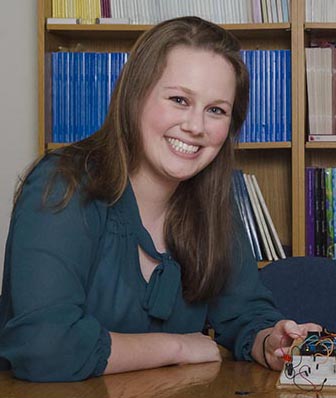
Noelle R. B. Stiles
Home
About
Publications
Teaching
Links
Multisensory Integration and Crossmodal Plasticity in the Brain Traditionally, vision, audition, and touch have been understood to be isolated sensations. Yet, in daily experience all the senses are blended into one holistic perception. In other words, a rose is not seen, then smelled, and then felt. Rather the rose’s radiant colors enhance the perception of its sweet scent, velvet texture, and rustling leaves. As recent studies have shown evidence for extensive multisensory or crossmodal interactions in the brain and behavior, the model of isolated sensations has become increasingly outdated, and a new model of dense multimodal interactions has developed. My research is focused on the study of these multimodal interactions, in particular, investigating how sensations cooperate with each other, resolve conflicting signals, and change when one sense is removed or restored. This multimodal research has a few primary concentrations of study: News:
